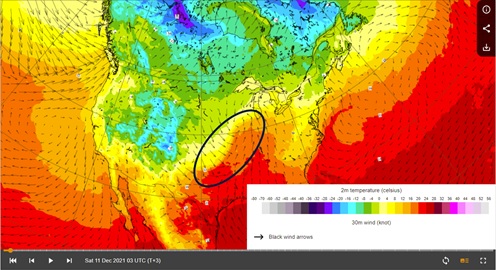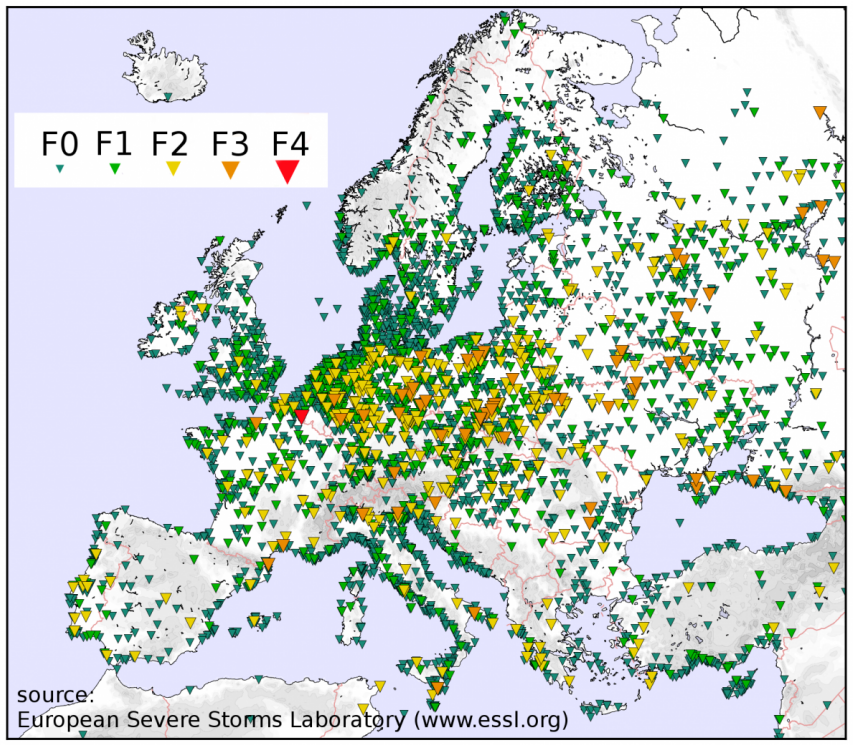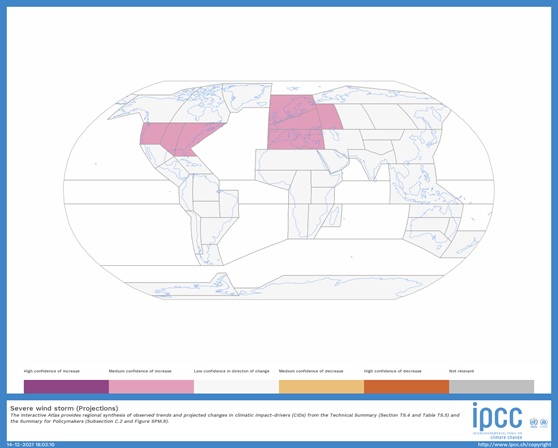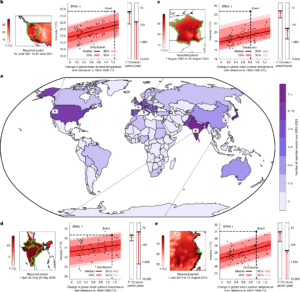Tornadoes and climate change: what we know
Devastating tornadoes in central U.S.A. took place on 10 and 11 December 2021, with widespread destruction of homes, infrastructures, and large parts of some midwest cities. Over a hundred people lost their lives and many more were injured. Given that we already live in a world of 1.2°C global warming, such extreme events immediately raise the question whether and to what extent climate change altered the likelihood and intensity of these devastating storms. Here we briefly summarize the current scientific knowledge on such links.

Tornado formation: tornadoes form in specific thunderstorm clouds called “supercells”, which are created by highly unstable warm and moist air, and wind shear. The ascending air motion is boosted by the wind shear as updraft and downdrafts feed each other within the cloud. In some cases, this can induce a rotating motion which then generates a low pressure center in the updraft and a tornado with surface winds of several hundred km/hr has formed. Tornadoes can erupt in clusters or lines in marked cold fronts. Such was the case on 10/11 December 2021, as shown in the figure, in a frontal system with cold northerlies smashing on warm and moist air coming from the Gulf of Mexico, with temperature differences of about 20°C near the surface. Occurrence of tornadoes in December is unusual.
Tornadoes days in North America have been observed to become less frequent but when they occur the number of tornadoes generated and their intensity has increased. Whether these trends are caused by climate change or natural climate variability cannot yet be established due to the lack of long, high-quality observations, and climate models with high enough resolution to simulate tornadoes.
The IPCC AR6 WGI assessed the available scientific evidence of the effect of climate change on tornadoes. On a global scale, homogeneous historical observations of tornadoes are not long enough to establish reliable trend statistics on climate timescales (at least 30 years). The report concludes that in general “observational trends in tornadoes, hail, and lightning associated with severe convective storms are not robustly detected due to insufficient coverage of the long-term observations”1. No attribution studies on tornadoes exist.
Over the continental U.S.A., “the mean annual number of tornadoes has remained relatively constant, but their variability of occurrence has increased since the 1970s, particularly over the 2000s, with a decrease in the number of days per year, but an increase in the number of tornadoes on these days” (footnote 1). In particular, observations indicate “increases in outbreaks with 30 or more tornados in one day, the density of tornado clusters, and overall tornado power”2.
IPCC states that over the U.S.A., “projections of favorable environments for severe storms (based on convective available potential energy and wind shear) indicate medium confidence for more severe storms and a longer convective storm season in the United States, weaker increases extending north and east, and a corresponding increase in fall and winter tornadic storms” (Footnote 2). However, these projections only apply to the general atmospheric situation that could generate tornadoes. Whether this will actually lead to a change in the likelihood and intensity of tornadoes themselves is currently impossible to predict with confidence.


Establishing the link or the absence of link between the U.S.A. outstanding tornadoes outburst would require an in-depth study. XAIDA will not directly study tornadoes, but will improve understanding and prediction of severe convective storms potentially leading to tornadoes in a warming climate. In particular, Artificial Intelligence methods will be used to downscale and detect severe convective storms and eventually attribute these events to human induced global warming.
 This project has received funding from the European Union’s Horizon 2020 research and innovation programme under grant agreement No 101003469.
This project has received funding from the European Union’s Horizon 2020 research and innovation programme under grant agreement No 101003469.
Archives

Climate Extremes & Societal Risks

Paper: Systematic attribution of heatwaves to the emissions of carbon majors


Une réponse